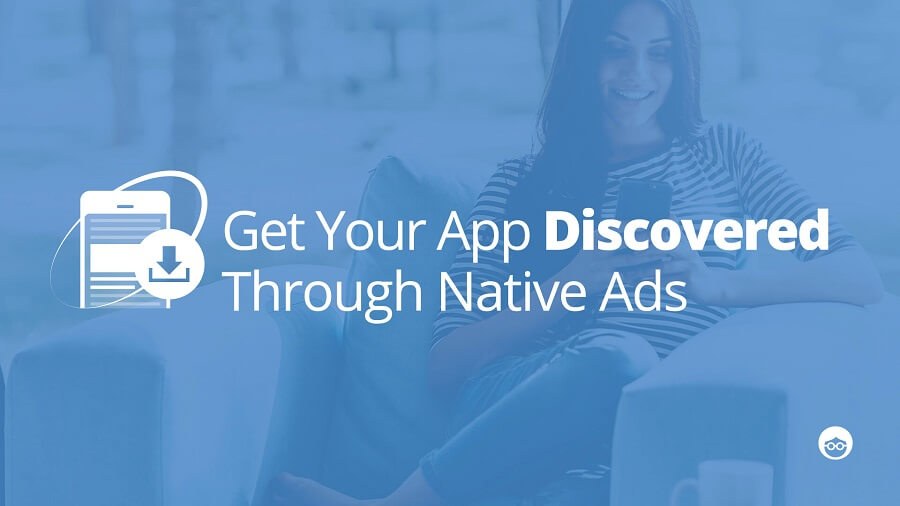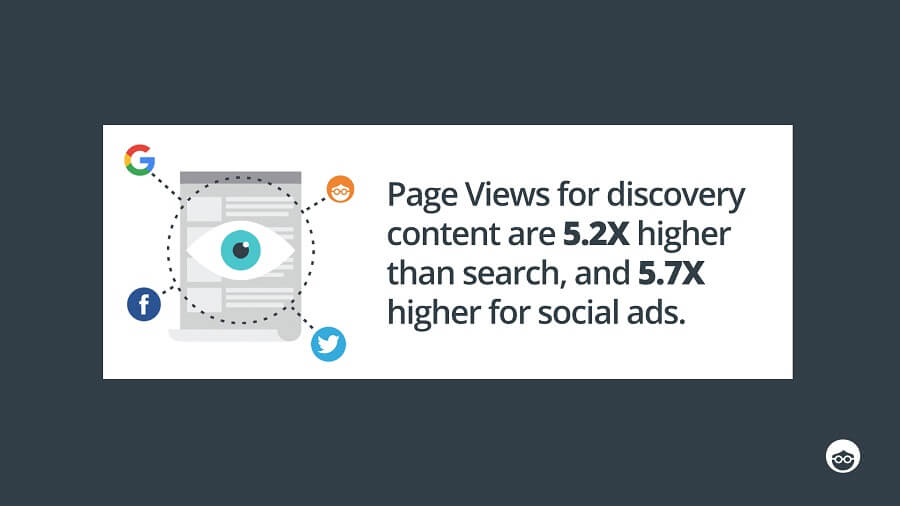Mobile Native Advertising – How to Boost Signups (and Revenue!) for Your Mobile App

In just a decade, the mobile app industry has exploded. Is it any wonder that mobile marketers are constantly searching for new and different ways to get more downloads for their apps?
There are a lot of marketing strategies to get your app discovered and to improve click-to-install rates. Everything from ASO and display ads, to SEO strategies and paid social ads.
Let’s take a look at one of the newer, lesser-known strategies that can help drive more app downloads: native advertising.
What is native advertising?
Native advertising is a type of online ad that fits in with the design and function of the web page. Native ads don’t really look like ads; they look like other editorial content featured on the page.
A click on a native ad leads to advertiser content on a website or landing page – but it’s not a hard sell. Rather, native content is relevant, informative and entertaining to the reader. It converts readers to leads by softly promoting the advertiser’s brand or product in a tangential way.
The new way to do app marketing
Native advertising is the hottest trend in digital marketing today, outperforming display ads in conversions and spend. Now, this trend is casting its net to include the world of mobile app marketing. Here’s how – and why – it works:
1. Native advertising combats banner blindness
Banner blindness is an epidemic. Overall, the CTR of display ads is a low 0.05%. Most online ads are just not getting clicked. Many of them are not even seen. Eye tracking research shows that display ads in the sidebar of a web page, and even ads at the top of the SERP, are mostly skipped over by viewers.
Not native ads. According to statistics, consumers look at native ads 53% more than display ads, and native advertising leads to nearly an 18% lift in purchase intent.
Because they don’t look like ads, native ads are more likely to engage users the way organic content does. This is even truer on mobile – due to the smaller screen size, there is less visual context, and it can be harder for the user to identify which on-screen elements are ads.
2. Native advertising is all about discovery
The biggest challenge facing mobile app owners today is getting their app discovered among the millions out there. The gentler, soft-sell approach of native advertising has been shown to work time and time again.
Why? It’s all about the user intent. With native ads, the user is in ‘discovery mode’. They are not searching for something specific, as when using a search engine. Nor are they checking what’s happening in their social network.
Rather, when viewers click on native ads, they are primed to discover something that catches their interest. In fact, readers are 5 times more likely to engage with a discovery ad, rather than search or social, and bounce rates are around 40% lower too.

3. You can tell compelling stories with native advertising
Storytelling sells. It’s one of the basic principles of marketing and advertising. Stories create suspense, interest and emotional connection. Most people don’t remember a product’s technical features. They remember how it made them feel. How it grabbed their imagination. How it answered a need.
Native advertising is the perfect way to build and promote storied content around your mobile app, which is the very thing that drives subscribers to install and sign up.
That’s what Blinkist did. Blinkist is an app that provides thousands of non-fiction books in recap format that can be read or listened to in just 15 minutes.
When Blinkist wanted to increase their app downloads and subscriptions, they created fun, compelling and relevant stories promoted on Outbrain’s native ad platform.

The results were astounding: 50,000 app downloads per month, 50% more time-on-site than search ads, and 20% conversion rate of Outbrain users who clicked on the App Store link.
4. You can target your best audience with native advertising
Nearly 200 billion app downloads were forecasted last year.
In this virtual haystack, finding your target audience is tough. When you serve ads to the wrong audience, it is not just a waste of time – it can also harm your brand integrity. With advanced interest targeting of native ads, you can cut through the noise and find your true audience.
It boils down to this: every one of us has an online persona that doesn’t necessarily reflect our true interests. Often, the things we share online are not the things we really like to read.
Outbrain’s targeting toolkit builds individual profiles on each user, showing the topics and websites that interest them. When creating native ad campaigns on Outbrain, mobile app marketers can leverage this data to target their best audience. Combined with real-time programmatic delivery, native ads are an incredibly efficient way to drive mobile app downloads.
5. Use native video ads to drive app installs.
Video is one of the most popular content formats. When learning about a product or service, 72% of consumers prefer video to text. And video boosts both engagement and conversion rates.
All in all, video is a key tool for today’s advertisers. But what if we were to combine the awesomeness of video with the performance of native ads? What kind of power could that unleash for digital marketers?
The answer is plenty. Outbrain recently launched its new ‘click-to-play’ feature, which is turning video marketing on its head. Instead of waiting (impatiently!) to skip unwanted videos, users pro-actively lean into the viewing experience by clicking to play. They are 100% engaged, from the outset.
Recent click-to-play native video campaigns, such as this case study, brought 2.7x higher completion rate, with 54% of viewers watching the whole video.
Native video ads are fairly in their infancy, but for something so new, they are proving to have extraordinary results.

Native ads, in all their forms, are a great way to get your app discovered.
Why? Because native ads are much more than ‘ads’. They are not designed to hard sell your app. Instead, they engage potential users with content that leads them to discover your app.
Then, they will be that much closer to hitting the ‘download’ link – and even beyond, to in-app purchases.


